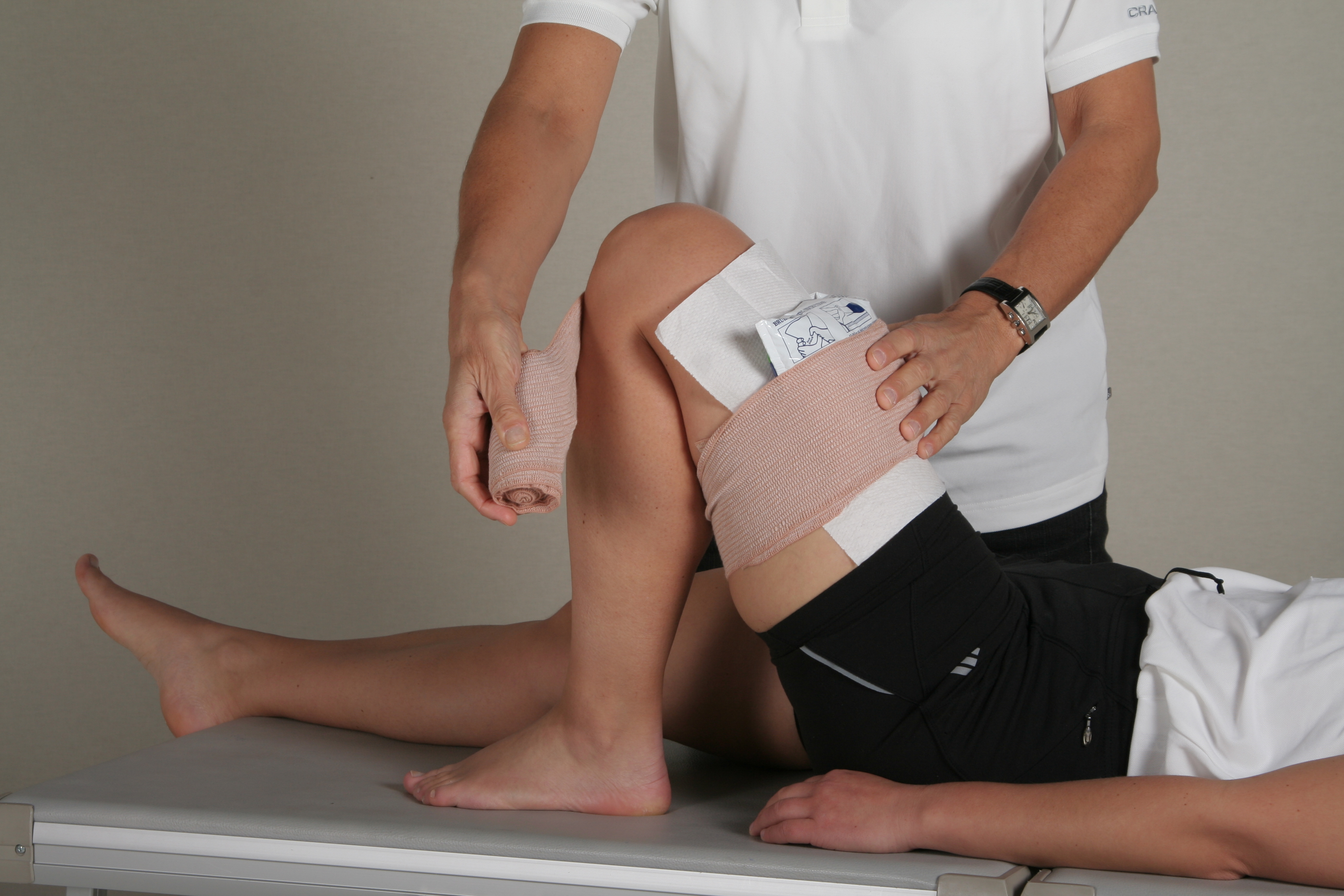First aid for thigh injuries
Here you can learn more about what to do after an acute thigh injury.

The recommended treatment for most acute injuries is referred to as the PRICE principle. This is an acronym for protection, rest, ice, compression, and elevation.
The goal of this treatment is to:
- Reduce pain and swelling
- Lay the foundation for a good rehabilitation
We recommend continuing the treatment for at least 48 hours after the time of the injury. However, some of the elements are more applicable than others.
Basic principles
PRICE is comprised of basic principles in the treatment of acute injuries, but should always be tailored to the injury type and site. Always use common sense. If a serious injury is suspected, contact emergency services.
Protection
In this context, it means to remove the athlete from play to protect against further injury. This is especially important in the first 48 hours after the injury occurred.
Rest
The athlete should not continue with any sporting activity following injury. How long the athlete is side-lined depends on the severity of the injury. Consult your doctor or physiotherapist for advice.
Ice
The aim of applying ice is to relieve pain. 20 minutes with an ice pack every other hour for a day or two generally has a good effect.
Even though there are many commercial ice products available, the best solution is often a plastic bag filled with crushed ice and some water. Place a damp towel between the ice pack and skin.
Compression
After an injury, the most important thing is to apply a pressure bandage. Using compression minimises swelling, which in turn may decrease stiffness and pain. Place a piece of foam or paper directly above the injury site. This gives additional compression. Start wrapping the bandage from below the injured area, and finish slightly above it. The compression bandage should be as tight as possible without cutting off blood circulation. The use of a pressure bandage should be continued for the first 2-3 days.
Elevation
Swelling can be reduced further by keeping the thigh elevated, preferably above heart level. This is particularly important in the first few hours, but it is best to continue to keep it elevated as much as possible for the first 24 hours. Remember that compression should be maintained around the clock to keep internal bleeding (swelling) to a minimum.


